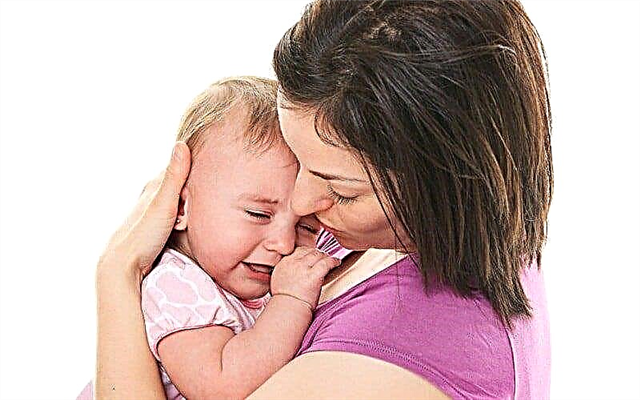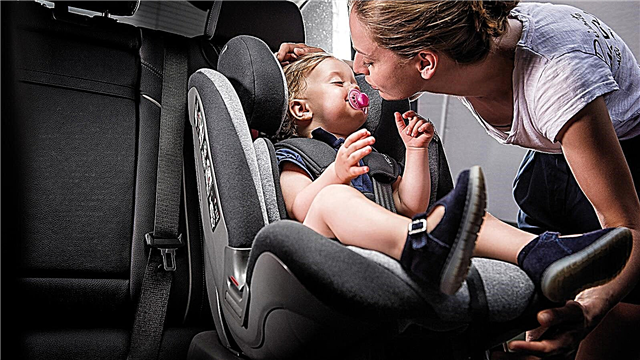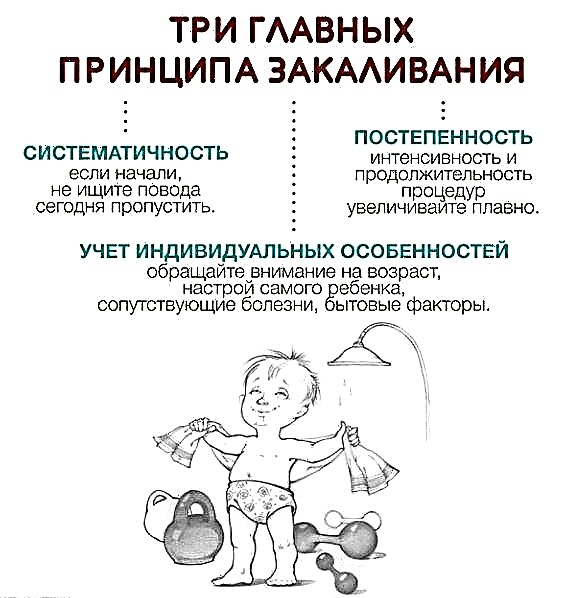
Poliomyelitis was halted by the universal efforts of the governments of many countries of the world. But it is not yet possible to completely exclude the disease from the list of existing serious diseases. In this article we will tell you about what this dangerous disease is, how to recognize it and how to treat it.

What it is?
Poliomyelitis is a viral inflammation of the cells of the gray matter of the spinal cord. The disease is most often childhood and highly contagious. The spinal cells are attacked by the poliovirus, which leads to paralysis. As a result, the nervous system ceases to function normally.
Usually, there are no visible symptoms in poliomyelitis, only when the virus enters the central nervous system, it causes paralysis and paresis.

The study of the disease began in the 19th century, and in the middle of the 20th century, poliomyelitis acquired the scale of a national disaster in many countries, including Europe. The poliomyelitis vaccine was developed independently by American and Soviet scientists. In recent years, countries have announced that they are polio-free. Outbreaks of the disease from time to time are observed only in three states - Nigeria, Afghanistan and Pakistan.
In 2015, two cases were recorded in Ukraine. Doctors have every reason to believe that polio can spread in this country due to the fact that, according to statistics, only half of Ukrainian children received the vaccine against the disease. In Russia, the situation is under control, but it tends to deteriorate. This is primarily due to the influx of migrants, including from neighboring Ukraine.

Causes of occurrence
Poliomyelitis is caused by a picornovirus from the enterovirus family. The virus is quite stable, for example, in an aquatic environment it can live without losing its properties for up to 100 days, and in human feces - up to six months. The virus is not afraid of low temperatures, and also perfectly repels the attacks of gastric juice, passing through the human food tract. Boiling water, sunlight, chlorine can destroy the virus.
A child can become infected from a sick person or a carrier who has no visible symptoms.
Through the mouth, the virus is released into the environment within a few days, and with feces - for weeks or even months. Thus, two ways of infection are possible - airborne and alimentary (through dirty hands, with contaminated food). The ubiquitous flies make a significant contribution to the spread of this virus.

After entering the child's body, the poliovirus begins to multiply in the lymphoid tissue of the tonsils, intestines and lymph nodes. Gradually, it enters the bloodstream, and from there - into the spinal cord and central nervous system.
The incubation period ranges from 3 days to one month, most often from 9 to 11 days. At the end of the period, the first signs of the disease may appear, or they may not appear, and then it will be possible to recognize poliomyelitis only by the results of laboratory tests.
Most often, cases of polio are recorded in summer and autumn. At risk are children from six months to seven years. In the first few months of life, the child is not threatened by poliomyelitis at all, since the maternal innate immunity reliably protects the baby from this type of enterovirus.
After illness, persistent lifelong immunity is developed to the polivirus.

Symptoms and signs by form
Most children do not get polio even after the incubation period. Symptoms will depend on the form of the disease and the state of the child's immunity.
Hardware
There are no symptoms. Paralysis does not develop. It is found only in blood tests. Antibodies to poliovirus are markers.

Visceral
The most common form. At the end of the incubation period, at the very beginning of the disease, there may be symptoms of the most common viral infection - sore throat, headache, fever, sometimes diarrhea and nausea.
The disease subsides in about a week. Paralysis does not develop.
Non-paralytic
With it, all the symptoms of a viral infection appear (sore throat, fever, abdominal pain), but more pronounced than with the visceral form.
There is tension in the occipital muscles, neurological manifestations. The disease is accompanied by severe headache, but does not cause paralysis.
The child recovers in 3-4 weeks.

Paralytic
This is the rarest and most dangerous form of the disease. With her, everything starts like a common ARVI, but the symptoms progress quickly, the child's condition rapidly deteriorates until delirium, episodes of loss of consciousness, and seizures occur.

If the child runs his fingers along the spine, he will experience severe pain. If you ask a child to touch his own knees with his lips, he will not succeed. A baby is sitting with this form of ailment with the torso tilted forward and with an emphasis on both hands, in the so-called tripod position. This form can cause paralysis. Usually, paralysis occurs when one fourth of the nerve cells die.
Complete paralysis is rare and occurs in only 1% of cases. But partial paresis of individual muscles are more common. Paralytic manifestations do not come immediately, but as the temperature decreases, closer to recovery. Most often, the muscles of the legs atrophy, less often the respiratory system or trunk.

Diagnostics
The symptoms of poliomyelitis are very similar to the clinical manifestations of many diseases caused by enteroviruses and herpes viruses. That is why, when symptoms of ARVI appear, it is important to call a doctor so as not to waste time and detect the disease, if any. This will help the methods of laboratory diagnostics.
Blood, a nasopharyngeal swab and a stool sample will be sent to the laboratory. It is in them that the virus can be detected.

First of all, the doctor will need to distinguish poliomyelitis from similar traumatic neuritis, Guillain-Barré syndrome, transverse myelitis. Poliomyelitis is characterized by high fever at the onset of the disease, descending paralysis, and decreased tendon reflexes.
If a child is suspected of poliomyelitis, he must be hospitalized in an infectious diseases hospital.

Consequences and complications
Dead cells of the spinal cord are gradually replaced, scarred, therefore, the functions of the part of the body for which they were responsible are partially lost. The spinal form of paralysis, in which the thoracic, cervical and lumbar regions are affected, threatens with flaccid paralysis of the limbs.
With bulbar poliomyelitis, the cranial nerves are affected, so the complications will be localized higher - basically, the process of swallowing and the reproduction of sounds by the vocal apparatus is disturbed. The most dangerous is considered paralysis of the respiratory muscles, this can lead to death.

Both facial nerves and the brain can be affected if the virus reaches the central nervous system. The latter is fraught with the development of lifelong persistent paralysis.
The prognosis for nonparalytic poliomyelitis is favorable.
With paralytic pathology, to one degree or another, they remain with the child for life. However, a competent and responsible approach to rehabilitation allows avoiding disability in case of mild injuries and restoring motor functions in full or almost completely.

Treatment
Despite the fact that mankind has worked hard to create a vaccine against poliomyelitis, no drugs have been developed against this disease. The virus is completely insensitive to antibiotics, and antiviral drugs are not able to slow down its progress.
The only protector of the child at this moment is his own immunity. Only he is able to develop antibodies that can deal with the virus before it infects the brain and kills a large number of spinal cord cells.

All therapy is reduced to the fact that the child is provided with symptomatic help. When the temperature rises, they give antipyretic drugs, for muscle pains, they give painkillers and anti-inflammatory drugs.
The onset of paralysis is closely monitored by doctors in the hospital, when neurological disorders and seizures appear, the child is prescribed muscle relaxants - drugs that relax muscles, an anticonvulsant treatment regimen.
In case of damage to the respiratory function, resuscitation assistance is provided by connecting the child to a ventilator.
In the course of treatment, the child is shown a plentiful warm drink, bed rest and complete rest.

The recovery period deserves more attention. It will be in it that it will be decided whether the paralysis will remain or will pass, the child will receive a disability or not. Rehabilitation after poliomyelitis begins with limiting the child's physical activity and physical activity. Muscles should not be strained to limit the paralyzed zones.
Then the load is gradually increased. The child is prescribed:
remedial gymnastics (exercise therapy);
hydrotherapy;
electrical stimulation of paralyzed or atrophied muscles;
massotherapy.

All these measures are needed exclusively in combination, and the rehabilitation period promises to be slow. The task of this stage is not even to restore the functions of dead brain cells, but to stimulate compensatory mechanisms - healthy cells must take over part of the functions of their dead brothers. If this can be achieved, the forecasts are more favorable.
During this period, hormones, enzymes, vitamins, calcium and magnesium preparations can be prescribed, since these substances provide faster contact when nerve impulses are conducted between the brain, nerve cells and muscles.

Can adults get sick?
Despite the fact that polio is traditionally considered a childhood disease, adults can also become infected with this disease. Their illness is more severe, and the consequences are always more pronounced and dangerous than in children. Adults are also more likely to die.
It is recommended to vaccinate against polio for adults every 5-10 years, and each time - before visiting countries where polio has not yet been defeated. Let us recall that these are Afghanistan, Pakistan and Nigeria.

Prevention
Non-specific disease prevention includes standard hygiene requirements - the child should wash his hands after returning from a walk and before eating, adults must fight flies as they carry poliovirus.
Children with suspicion of this disease are isolated in special hospitals, and in the kindergarten or school they attend, they are quarantined for 21 days. During these three weeks, medical workers closely monitor the slightest changes in the well-being and condition of other children, measure their temperature every day, and examine the tonsils.
Vaccination and the consequences of vaccinations
The most effective prevention against this ailment is vaccinations. Today in Russia two types of vaccines are used: one contains live, but highly weakened polioviruses, the second - completely inactivated viruses killed by formalin.
Vaccination against poliomyelitis is included in the list of mandatory in the Russian Federation, it is included in the National Calendar of Preventive Vaccinations and is free of charge.
The first wave of vaccinations begins at a very early age. The vaccine in the form of drops for oral administration is given to the child at 3 months, at 4.5 months and at 5 months. Then the drops will be given to the child at a year and a half, at 6 years old and at 14 years old.

Very often, pediatricians combine polio vaccination with DTP vaccination (against whooping cough, diphtheria and tetanus), however, provided that the child is older than 2 years at that time.
Vaccination can be not only in the form of drops, but also in the form of a solution for injection, but such vaccines are produced only abroad (in France, Belgium) and are purchased by the Russian Ministry of Health annually.
Multicomponent vaccines, which immediately combine components against whooping cough, tetanus, diphtheria and polio, are also produced by foreign pharmaceutical companies.

Domestic vaccines are offered free of charge in the children's polyclinic. If the parents have a desire to vaccinate the baby with an imported drug, then they will have to pay for it.
It is not recommended to feed the child abundantly before vaccination, it is important that on the eve of a visit to the clinic, he empties his intestines. At the time of vaccination, the baby should be healthy, he should not have fever and other symptoms of possible diseases.
After vaccination, the child is not fed or watered for an hour.

Vaccination is not dangerous for children's health, although sometimes it can cause certain unpleasant consequences, in particular, diarrhea. It is temporary and is not dangerous for the child.
In one case in a million, the administration of a live vaccine causes polio. If the vaccinated child falls ill, then the probability of paralysis is estimated at only 1%.
Sometimes the child may react to the vaccine with a slight allergic reaction, such as urticaria. The vaccine usually does not cause fever.
After vaccination, you can walk, swim, and lead the most ordinary way of life. But with the introduction of new products into the child's diet after vaccination, it is better to abstain for at least a week.

Contraindications to vaccination
Children who reacted to the previous vaccination with violent manifestations of the nervous system, who had neurological disorders after the vaccination, are exempted from the vaccination. Children with HIV infection and other causes of immunodeficiency are not vaccinated either.
If the child is sick or has been ill recently with any viral infection, the vaccination is temporarily postponed. Moreover, other diseases not caused by viruses are not grounds for canceling the next vaccination.

You should not refuse this vaccination, since polio is a dangerous disease that can make a child disabled, despite the level of development of modern medicine, its capabilities and timely provision of qualified assistance.
For more information on poliomyelitis, see the next program of Dr. Komarovsky.



